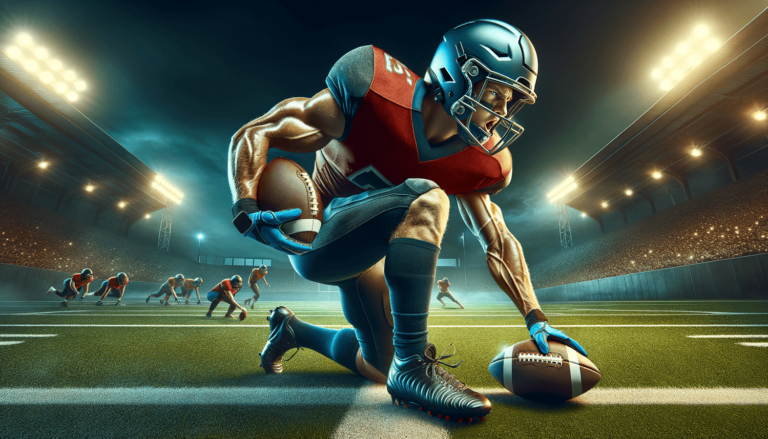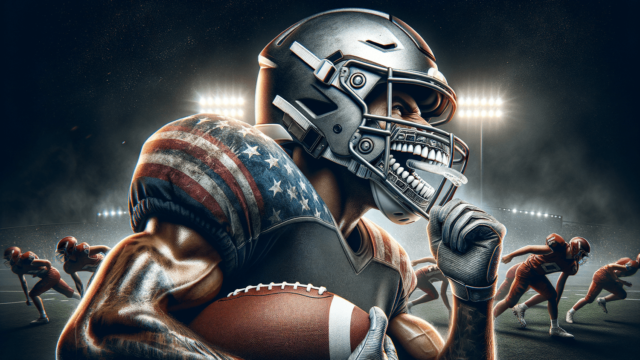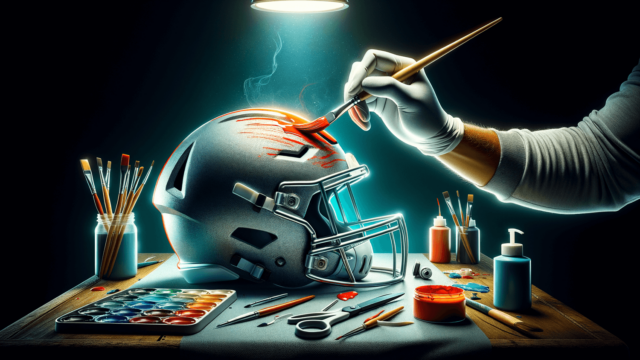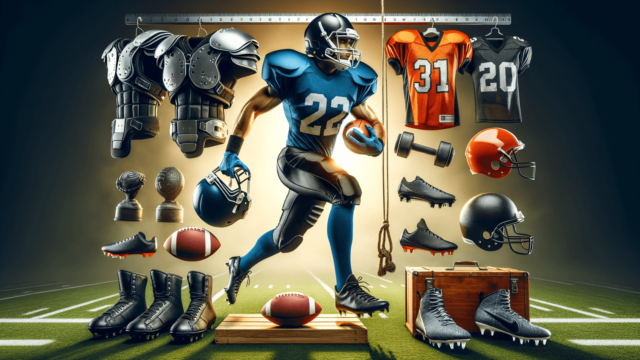
A football helmet should be snug and secure, fitting closely to the head without causing discomfort or pain. It should cover the entire head, including the back and sides, and not move or shift when the player moves or turns their head. The chin strap should be properly adjusted, ensuring a secure fit while allowing for easy breathing and speaking. Make sure to consult the helmet’s manufacturer for specific sizing and fitting guidelines.
Importance of a Properly Fitted Football Helmet
A properly fitted football helmet is crucial for player safety and performance. Wearing a helmet that is too tight or too loose can lead to injury and affect the player’s ability to focus on the game. A secure fit ensures the helmet’s protective features work effectively, reducing the risk of head injuries.
Finding the Correct Helmet Size
To determine the correct helmet size, measure the circumference of the player’s head about an inch above the eyebrows. Consult the helmet manufacturer’s sizing chart to find the corresponding size based on the head measurement. Trying on different sizes and styles will help find the best fit for the individual player.
Adjusting the Helmet Padding
Modern football helmets come with adjustable padding for a customized fit. Once the player has chosen the correct size, make sure the inflatable air bladders or padding located inside the helmet are properly adjusted. Inflate or deflate the padding to achieve a snug fit. If the padding isn’t adjustable, consider adding or removing additional pads to optimize the fit.
Securing the Chin Strap
The chin strap plays a crucial role in ensuring the helmet stays in place. When fastened, the chinstrap should be tight but still allow the player to talk and breathe without discomfort. To secure the chinstrap:
- Place the cup under the chin and fasten both strap ends to the helmet’s snaps.
- Adjust the strap length so it’s tight and secure, but not overly constricting.
- Check to make sure the player can still easily open their mouth.
Helmet Stability Test
After the helmet is securely fastened, perform the stability test to ensure a proper fit:
- Ask the player to move their head vigorously in all directions.
- Ensure the helmet stays in place without sliding or shifting.
- Check for any discomfort or pinching during these movements.
Remember to consult the helmet manufacturer’s guidelines for specific sizing and fitting instructions, and make adjustments as needed to achieve the best fit for the player.
Maintain Helmet Condition for Optimal Fit
Regular maintenance and care are essential for ensuring a football helmet remains in optimum condition and maintains the correct fit. Make sure to inspect the helmet regularly for signs of wear and damage. Replace worn padding, broken straps, or damaged shells promptly to ensure consistent protection and comfort.
The Role of Hairstyle and Other Headgear
When fitting a football helmet, it’s essential to consider the player’s hairstyle and any additional headgear they may wear during the game. Long hair, ponytails, or accessories can affect helmet fit and should be accounted for when measuring and adjusting. If a player changes their hairstyle or wears a skull cap or headband during games, it is essential to recheck the helmet fit to maintain proper protection.
Why Comfort Matters
While safety should be the primary concern when fitting a football helmet, player comfort can affect performance on the field. An uncomfortable helmet can cause distractions during gameplay, so make sure the helmet fits well without any pressure points or pinching. Aim for a comfortable fit that remains secure and allows the player to focus on the game.
Fitting Youth Helmets
Young players’ rapidly growing heads require extra attention when it comes to helmet fit. Helmets should be checked for size and fit more frequently to accommodate changes in head size. In addition, youth helmets often have different safety features and fitting considerations than adult helmets, so consult the manufacturer’s guidelines for fitting youth helmets specifically.
Consequences of an Incorrectly Fitted Helmet
An incorrectly fitted helmet can have severe consequences, including an increased risk of head injuries like concussions, as well as neck strain and discomfort. Make sure all players on the team have access to properly fitted helmets, and regularly check for changes that may require adjustments to maintain a secure, snug fit throughout the season.
FAQ Section: Football Helmet Fitting
Here are some frequently asked questions about properly fitting a football helmet. Use this information to ensure player safety and performance on the field, and always refer to the manufacturer’s guidelines for specific helmet fitting instructions.
How often should I check my football helmet’s fit?
Inspect the fit of your football helmet regularly, particularly at the beginning of each new season. Also, check the fit if any changes occur, such as a new hairstyle or the addition of headgear like skull caps. For youth players, check the fit more frequently due to their rapidly growing head size.
Can I wear a football helmet and glasses?
Yes, you can wear sports glasses or goggles underneath a football helmet; however, make sure the helmet still fits securely and comfortably. You may need to adjust the helmet to accommodate the glasses, and it’s essential to ensure glasses or goggles are also securely fitted and do not cause discomfort or pressure points.
How long does a football helmet last before it needs to be replaced?
A football helmet’s lifespan typically ranges from 7 to 10 years, depending on usage and the manufacturer’s guidelines. Regularly inspect your helmet for signs of wear or damage, and replace it promptly if the padding, chin straps, or shell are compromised. Keep in mind that reconditioning or recertifying a helmet may be required depending on usage and age.
How do I know if the helmet is too tight or too loose?
A properly fitted helmet should feel snug without causing discomfort or pain. If a helmet is too tight, it may leave red marks on the skin, cause headaches, or become uncomfortable to wear for extended periods. A helmet that is too loose will shift or slide when the player moves their head. The key is to find a balance between a secure, snug fit and overall comfort.
What should I do if my helmet still doesn’t fit well, even after following the manufacturer’s guidelines?
If you’ve followed the manufacturer’s fitting guidelines and your helmet still doesn’t fit properly, consult with a coach, equipment manager, or an expert at a sporting goods store for assistance. They can help you with additional adjustments or recommend a different helmet style or brand that might better suit your individual head shape and size.
Featured Posts
- No pillar pages found.





